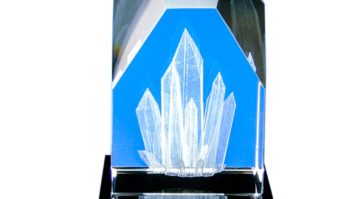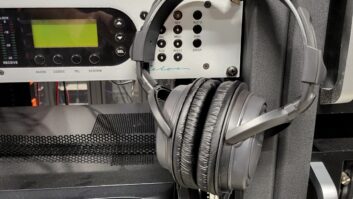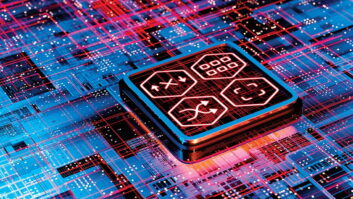Ever since my affectionate Milestonescolumn about Martis appeared in Radio World back in 2005, an endless parade of Marti remote pickup receivers and transmitters has passed across my workbench. Marti users near and far have sent me their gear in the hope that I can either resurrect it back to functionality or peak it up to new performance.
One troublesome item in those Marti units since day one were the heaters in the crystal ovens. At this point almost all ovens of one particular brand are non-functional.
Most Martis will run adequately without a functioning heater in a room temperature environment. However, to achieve peak stability performance and in locations subject to very low temperatures, a heated can is needed.
My solution is to build a replacement heater for single-frequency applications (two crystals and this heater circuit will not fit easily in a standard Marti crystal can). Most crystal oven heaters are of the thermostatic variety; the heater element heats up the inside of the can and at a fixed point a thermostat element opens the circuit. After cooling, that thermostat closes, current flows again and that starts to pick up the heat. The range of temperature is set by the make and unmake points of that particular thermostat.

Fig. 1: Basic schematic for the proportional crystal oven heater. See text for assembly details. The schematic (Fig. 1) is of the somewhat different “proportionate” type. Proportionate temperature controllers forego the abrupt on-off control and use a sort of dynamic feedback loop varying the heat generated by the oven element to maintain a predetermined set point. The goal is to balance the heat generated with the temperature needed and, if properly designed, these ovens can maintain that temperature quite closely.
The collector of an NPN transistor is connected to 24 volts as in a Marti STL-8 receiver or an RPU “R” series receiver. The emitter goes to ground through a 270 ohm 1/2 watt resistor. The nominal design current flow is about 40 mA with 12 volts across the resistor. That brings the 270 ohm resistor to near maximum heat handling capability, making it essentially a 1/2 watt heater. 24 volts also feeds a resistive voltage divider made up of a fixed 9.4 kohm resistor and a thermistor to ground. At room temperature of about 68 degrees Fahrenheit, the thermistor has about 10 kohm resistance. If the heat goes up the thermistor resistance goes down, dropping the voltage at the junction point of these two resistors. This lowers the voltage at the “pass” transistor’s base, dropping the voltage applied to the heater resistor and hence lowering the heat generated.
At just about 90 to 100 degrees Fahrenheit, equilibrium is obtained (component value dependent) and with slight proportional adjustments, the crystal is kept at a stable temperature.
CONSTRUCTION FINE POINTS
Here are the practical details. Since the temperature of the crystal is what is important, the 270 ohm resistor and the thermistor are pressed directly against the crystal on opposite sides under shrink wrap. The heat of the resistor on one side migrates through the crystal can to the opposite side providing a sort of control hysteresis.
A 2N3440 NPN (basically a 2N2222 on steroids) was chosen as it has a good power rating, it remains stable at temperatures over 100 degrees Fahrenheit and is in a metal can. Most important, my good friend Bill Rosenfeldt gave me 60 of them for my 60th birthday present! That’s a lot of transistors to find applications for, and this is a perfect use.
The thermal qualities of this transistor are important as we have chosen to keep the transistor inside the crystal can. The IR drop across the transistor is also given up as heat and so we really have two heaters: The 270 ohm resistor is heating the crystal directly and the 2N3440 is heating the interior of the closed can. So the transistor has to be stable and tolerate high temperatures otherwise you’d probably have thermal runaway.
Assembly is straightforward. Open the can (small screws on the sides) and mark the position used by the active crystal. Unsolder and remove the old heater (usually looks like a ceramic capacitor) and the redundant second crystal socket.
Take the crystal and swab a little “stiff” aluminum heat sink compound. Cover the leads on both the 270 ohm resistor and the thermistor with small shrink wrap so they will not short out on the crystal walls. Now shrink wrap the entire crystal with the thermistor and the resistor on opposite sides.
Solder two #20 tinned solid bus wires into pins 3 and 7 (99 percent of all Martis use pin 3 for the high side of the voltage and pin 7 as ground, but double check this before you start). Assemble the circuit as you like using these stiff posts as mounts such that the top of the transistor is even with the top of the can when it is placed over this new assembly.

Fig. 2: The proportionate crystal heater undergoes bench test prior to final assembly. Remove the insulation found in the top of the heater can and then fill the top with a little more than 1/8-inch of stiff aluminum heat sink compound. This paste will bond with the top of the transistor when assembled and allow the heat to run off onto the skin of the can.
Put the can top on once and see if you have even paste on the top of the transistor and if so, then rotate the can 180 degrees and screw back together if the can has just two screws. If it’s the more rare three-screw variety, dab a little more on top of the transistor and put it back together.
Fig. 2 shows the assembly just after the heat paste check and just before the can was put on permanently.
Thus far this little circuit has proven to be reliable, durable, stable and effective.
Although I have not made one of these for another voltage, it would seem to me that for 12 volt cans you could use a 120 ohm resistor instead of a 270 and the performance results should be about the same.
Total cost: About $10.
You can read our earlier Milestonescolumn about Martisunder Columns/Milestones at radioworld.com; it also appears at www.martielectronics.com, keyword Fitch.
Buc Fitch, P.E., CPBE, AMD, is a frequent contributor to Radio World.












